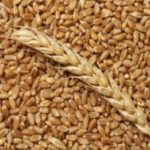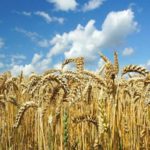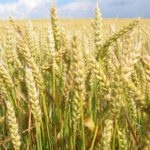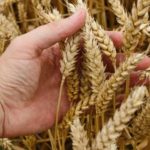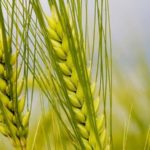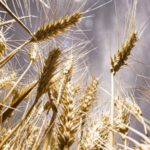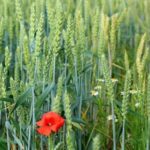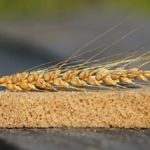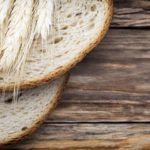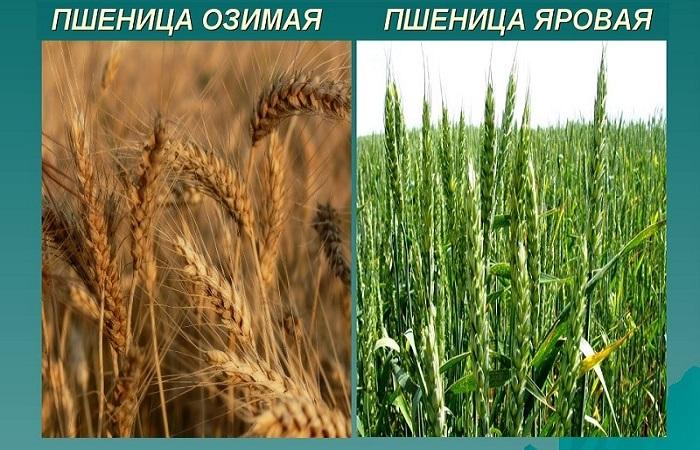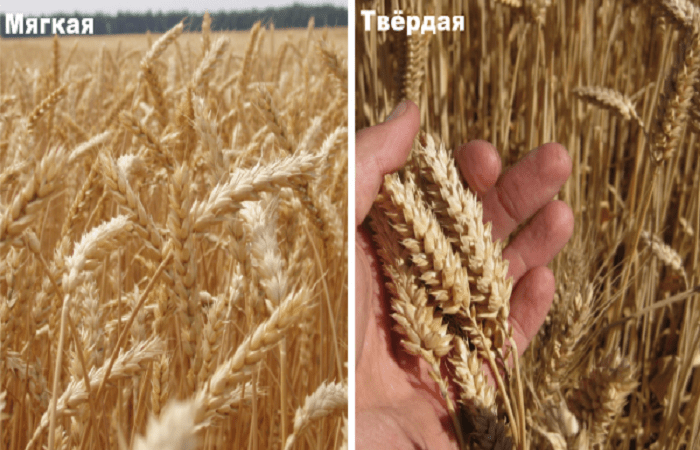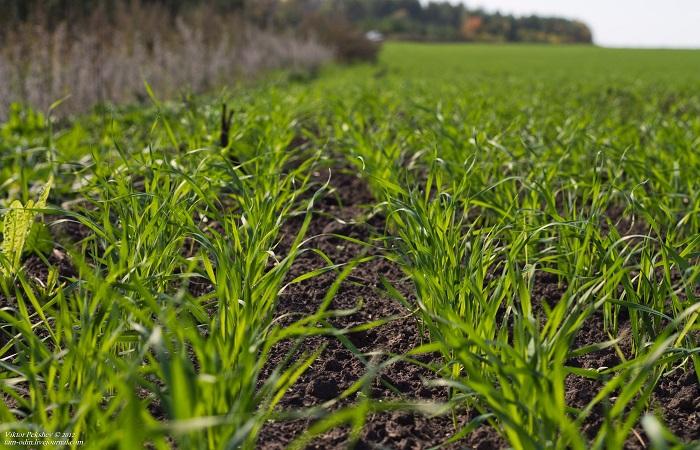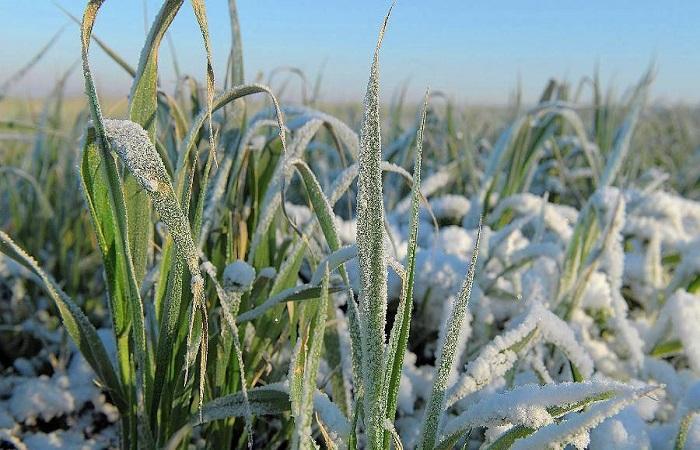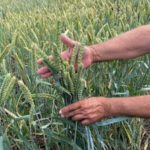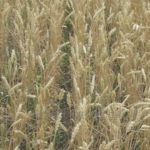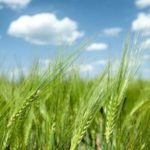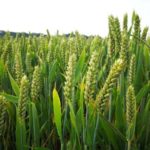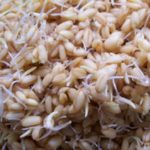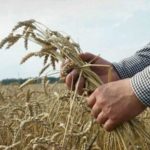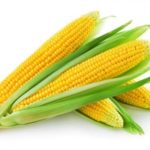Wheat is one of the oldest crops and the main type of cereal in many countries. Let's consider the classification of wheat, types, structure of the plant and ear, history of cultivation of the crop and significance for agriculture. What characteristics and properties does wheat have, what varieties and varieties are popular, where the crop grows and the main methods of growing it.
What is wheat
Wheat belongs to the cereal family, perennial or annual, in cultivation an annual plant.When asked whether it is a grass or a shrub, the answer is that it is a herbaceous plant that bushes and forms several stems. Wheat reproduces with the help of grain seeds, which are formed in spikelets collected in a straight and complex ear.
Wheat forms flowers in spikelets of 2-4 pieces, in total a different number of grains are formed, it is believed that by the number of fruits in a spike one can roughly determine the yield of the cereal - how many grains are contained in a spike, so many centners per hectare can be collected. On average, 25-35 seeds are formed in one ear, but there may be more.
The importance of wheat for agriculture is enormous. Flour is obtained from its grains for baking bread, making pastries and pasta. Wheat is also used to feed animals, and alcoholic drinks are made from it.
Structure, ears
The wheat plant grows to 30-150 cm and has erect, hollow stems called culms. Leaves are up to 20 mm wide, linear, flat, with a bare or hairy surface, a well-developed root system.
The inflorescence is a straight, complex spike, 3-15 cm in length, consisting of single spikelets, which are placed on an axis in two longitudinal rows. Spikelets are sessile, 9-17 mm long, flowers with a short axis. The fruit is a grain 5-10 mm long, oval, with a groove in the middle, with short hairs in the upper part. Simple starch grains.
Story
Wheat as a species and grain crop originates from the Middle East. The theory, based on a genetic comparison of the wild and cultivated varieties, places the area where wheat originated in southeastern Turkey. It is possible that the domestication of wheat could have occurred in other regions, but there is no archaeological evidence for this, and the wild variety does not grow everywhere.
Wheat is one of the first cultivated cereals; it began to be cultivated back in the Neolithic. At first, apparently, incompletely mature seeds were used for food, because the mature ones in the wild species fall off immediately after ripening. The plant was then gradually domesticated by selecting for seeds that produced shatter-resistant plants.
The cultural life form of wheat from the zone of origin began to spread to other areas: throughout the Mediterranean countries, then came to India, Africa, Britain, and China. Wheat became known on the American and Australian continents only in the 16th-18th centuries.
Characteristics and properties of wheat
The culture has many varieties and varieties. In many countries, in addition to the standard, common varieties, there are also their own, local ones. Varieties differ in the shape and length of the stem, ear, grain size and even their chemical composition.
Plant varieties differ in grain characteristics. This applies to the size, shape, thickness of the grains, as well as their internal structure. The structure is determined by such a concept as glassiness. If the bond between the grain particles is strong, then it will be hard and brittle, transparent, yellowish in color, and fall into pieces when broken. Such characteristics are typical for durum wheat.
In soft grains, the contents of the grain are white, mealy, and crumbly. There is also a medium form, when the grain has a mealy kernel, and around it there is a content of a partly soft, partly glassy structure.
Spring and winter
The main difference between these varieties is the growing season. In spring crops it lasts on average 100 days, in winter crops – 280 days. Therefore, there is a difference in sowing time between the varieties of these varieties: spring varieties are sown in the spring, winter varieties - in the fall.
Winter varieties are sensitive to nutrition at the tillering stage; at this time they must receive all the nutrients; if they are not enough, the yield will begin to decline.
Spring varieties are more sensitive to weather and its changes; during the tillering period they need phosphorus. At this time, foliar feeding can be done as a supplement to the root feeding. Plants especially need them in cold weather or drought conditions; they absorb nutrients well.If we compare the baking properties of flour from grains of these varieties, they are higher than those of winter flour varieties. But they benefit from being more productive.
Soft and hard
The difference between soft and hard wheat is not only in the structure of the grain. In soft ones, the stem is thin-walled and hollow, in hard ones it is thick-walled and filled with a spongy mass. The ear of the former is shorter and wider, the grain of the latter is held more tightly in the ear, which is an advantage and a disadvantage - they do not fall off when ripening, but they are also more difficult to thresh.
Moisture requirement
Lack of moisture affects the development of plants and their productivity. An increase in water production due to irrigation and precipitation is expressed in an increase in yield. It is estimated that for every 10 mm of moisture, plants are able to increase yield by 100-200 kg per hectare.
If there is a lack of moisture during the growth period of the stems, they develop poorly; if little water enters the plant during the period from 3 leaves to the stage of emerging into the tube, only 1 stem may develop on it. During the formation of generative organs, moisture deficiency creates the prerequisites for the formation of fewer spikelets, an empty lower part and the top of the spikelet.
Frost resistance
Wheat develops optimally at a temperature of 10-24 °C. Deviations from the norm have a negative impact on the development and productivity of wheat. Plants are especially sensitive to sudden changes in temperature during the main stages of development.
Seeds and seedlings are resistant to cold; they germinate at temperatures just above zero.Leaves can tolerate temperatures of -7-9 °C and even up to -12-18 °C if they have been hardened. Young leaves are especially resistant to cold. Wheat roots can die at temperatures of -3-5 °C, but they are protected by the soil, so this rarely happens. Spikelets and flowers are damaged at -2-3 °C.
Preferred soil
Winter varieties are more demanding of the soil, especially its acidity. The best soils for it are chernozems and dark chestnut soils with a neutral or slightly acidic reaction. Spring wheat is not so demanding on soils; they can be grown on almost all types, except acidic ones.
Wheat varieties
Winter varieties: Ilias, Lars, Bohemia, Alliance, Scepter, Vasilina, Ermak, Krasnodarskaya 99, Lazurnaya, Astet and others. These are varieties of a soft variety of culture.
Spring varieties include Daria, Toma, Visa, Rassvet, Rosstan. Many varieties are resistant to harmful organisms - fungi, bacteria and pests.
Where does it grow
Most of the wheat grown is in large countries - Russia, China and the USA. This is a raw material for processing into flour; grain is used as a feed and industrial crop. It is used to make cereals (semolina, wheat, bulgur, couscous) and alcohol for the production of vodka and beer. Grain, green mass, straw and haylage are used to feed livestock. This makes wheat cultivation a waste-free production.
There are many varieties and varieties of wheat due to the fact that it is a popular crop and is grown on all continents. The classification divides the crop into spring and winter varieties, soft and hard; there are differences between them in the structure, characteristics, properties of the plants and fruits themselves. The features of growing technology and the quality of flour obtained from grain depend on them.

